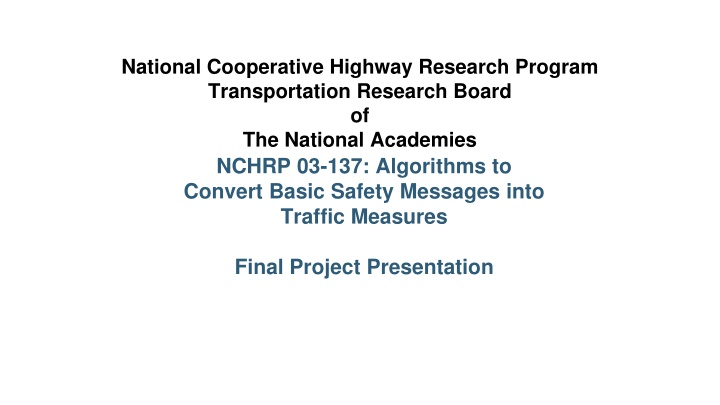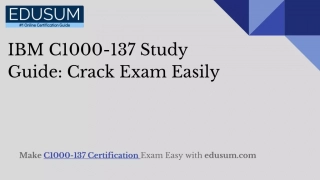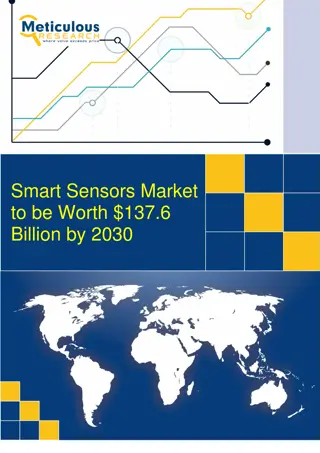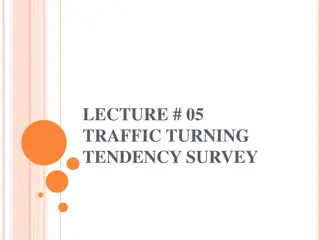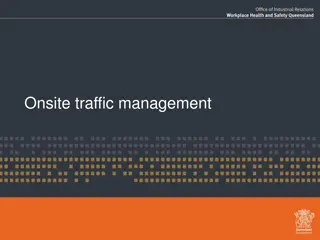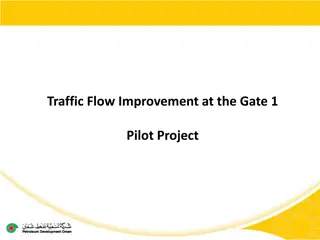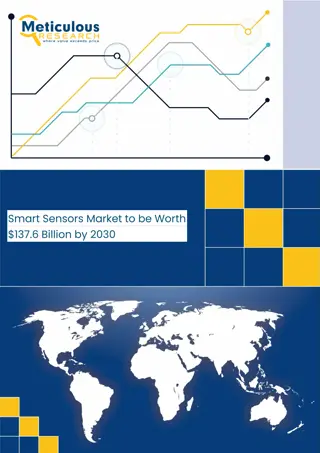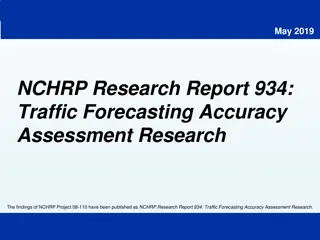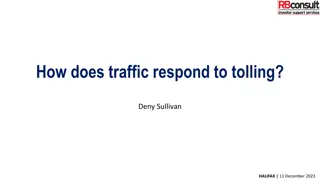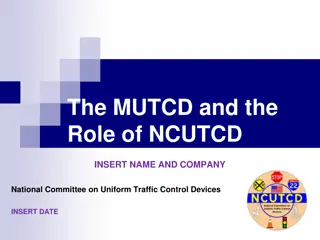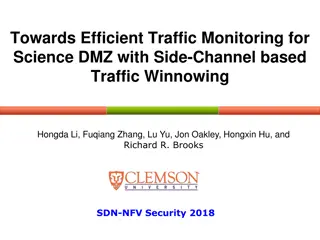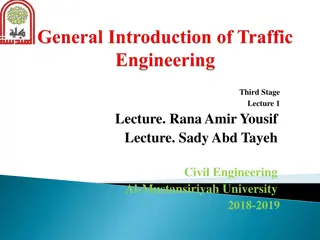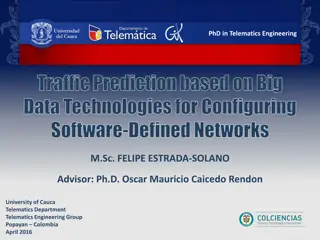Algorithms for Traffic Measures: NCHRP 03-137 Research Project
The National Cooperative Highway Research Program (NCHRP) conducted the NCHRP 03-137 project to develop algorithms converting Basic Safety Messages into actionable traffic measures. The research outcome aims to empower state and local agencies with early access to BSM data for enhanced system management capabilities, cost reduction, and accuracy improvement. The project team, led by Meenakshy Vasudevan, collaborated with a diverse panel of experts to maximize the utility of BSM for traffic management and traveler information dissemination.
Download Presentation

Please find below an Image/Link to download the presentation.
The content on the website is provided AS IS for your information and personal use only. It may not be sold, licensed, or shared on other websites without obtaining consent from the author.If you encounter any issues during the download, it is possible that the publisher has removed the file from their server.
You are allowed to download the files provided on this website for personal or commercial use, subject to the condition that they are used lawfully. All files are the property of their respective owners.
The content on the website is provided AS IS for your information and personal use only. It may not be sold, licensed, or shared on other websites without obtaining consent from the author.
E N D
Presentation Transcript
National Cooperative Highway Research Program Transportation Research Board of The National Academies NCHRP 03-137: Algorithms to Convert Basic Safety Messages into Traffic Measures Final Project Presentation
NCHRP is sponsored by the individual state departments of transportation of the American Association of State Highway and Transportation Officials. NCHRP is administered by the Transportation Research Board (TRB), part of the National Academies of Sciences, Engineering, and Medicine, under a cooperative agreement with the Federal Highway Administration (FHWA). Any opinions and conclusions expressed or implied in resulting research products are those of the individuals and organizations who performed the research and are not necessarily those of TRB; the National Academies of Sciences, Engineering, and Medicine; the FHWA; or NCHRP sponsors.
NCHRP Research Outcome Position state and local agencies to take early advantage of Basic Safety Messages (BSM) to: reduce cost, improve accuracy, and add new measures to their systems management capabilities. Examples of high-value use cases: Early detection of queues from broadcast BSM can help traffic managers take proactive decisions (e.g., dispatch maintenance crew to fix a broken water hydrant) Presence/location of incidents can be detected rapidly to allow traffic managers to take actions (e.g., dispatch first responders, dispatch maintenance crew, re-route traffic) BSM can be used to provide reliable traveler information (e.g., travel times) even on facilities without traditional sensors 3
Project Team Meenakshy Vasudevan, Ph.D., PMP Principal Investigator Noblis Karl Wunderlich, Ph.D., PMP Director of Surface Transportation Noblis James O Hara, CSM Software Developer Noblis Haley Townsend, SSM Data Scientist Noblis Sampson Asare, Ph.D., PMP Sr. Transportation Engineer Noblis Syihan Muhammed, CSM Programmer Noblis Kaan Ozbay, Ph.D. Professor and Director of C2SMART New York University (NYU) Di Yang Research Assistant and Ph.D. Candidate NYU Jingqin (Jannie) Gao, Ph.D. Sr. Researcher NYU Abdullah Kurkcu, Ph.D. Lead Traffic Modeler Ulteig (formerly NYU) Fan Zuo Research Assistant and Ph.D. Candidate NYU 4
Project Panel Taylor Li, Ph.D., P.E. Assistant Professor University of Texas at Arlington Andrew J. Robinson Director of Technology Event Dynamic Ray A. Starr Assistant State Traffic Engineer Minnesota DOT (MnDOT) Jason (Xianding) Tao, Ph.D. Senior ITS Engineer Washington, DC DOT (DDOT) Jon Obenberger, Ph.D., P.E., FHWA Liaison Transportation Operations Engineer FHWA Office of Operations Research and Development Mo Zhao, Ph.D., Panel Chair Research Scientist Virginia Department of Transportation (VDOT) Matthew W. Bond District Traffic Engineer Virginia DOT (VDOT) Marco D. Cameron, P.E. Traffic Operations Division Texas DOT (TxDOT) Nikola Ivanov, PMP Director of Operations/COO Center for Advanced Transportation Technology Laboratory (CATT Lab) 5
Project Overview PROJECT OBJECTIVES Develop and validate algorithms that will use BSM data to estimate selected traffic measures (performance monitoring, traffic control, traveler information) PERIOD OF PERFORMANCE 1 August 2019 30 November 2021 (28 months) Go/No-Go (4/20/20) Phase I Phase II Task 0: Project Mgmt Task 1: Literature Review Task 2: Measures Identification Task 3: Interim Report Task 4: Algorithm Development Task 5: Algorithm Validation Task 6: Algorithm Publishing Task 7: Final Deliverables Task 2: In- Person Meeting (10/17/19) Task 3: In- Person Meeting (1/8/20) Task 4: Virtual Meeting (11/17/20) Task 5: Virtual Meeting (4/8/21) 6
Literature Review to Identify Existing Algorithms Literature Review PURPOSE Conduct literature review to identify existing algorithms that convert BSM to traffic measures to avoid duplication of efforts and identify gaps in traffic measures research Measures Identification KEY FINDINGS FROM LITERATURE REVIEW & STAKEHOLDER INPUT (#1 of 2) Most of the reviewed algorithms that convert BSM into traffic measures: are focused on safety measures, with limited research on mobility measures, especially for non-recurrent congestion or adverse weather conditions do not factor vehicle ID privacy into their logic assume perfect and reliable communication between connected vehicles (CV) and back-end infrastructure are unable to estimate accurate lane-specific measures show limited use of certain BSM elements for measures estimation have low accuracy under low CV market penetration rates have undergone limited rigorous testing or field validation will require increased computational processing needs with increase in CV market penetration Algorithm Development Algorithm Validation Algorithm Publishing Final Deliverables 7
Literature Review to Identify Existing Algorithms Literature Review KEY FINDINGS FROM LITERATURE REVIEW & STAKEHOLDER INPUT (#2 of 2) There is a need to develop algorithms for real-world operations. Measures Identification There is a need for open-source algorithms to estimate measures, for potential adaptation by agencies and practitioners. There is limited capability to accurately estimate localized measures, such as traffic density, volume, and occupancy from BSM. Algorithm Development Fusing BSM data with data from other sources as well as synchronization of timescales are key challenges in BSM-based measures estimation, but there is limited literature on how this is addressed. Algorithm Validation Algorithm Publishing Final Deliverables 8
Identify, Prioritize, & Down-Select Traffic Measures Literature Review PURPOSE Identify key traffic measures that are commonly used by agencies for performance monitoring, traffic control, and traveler information Measures Identification Describe how BSM data will be used to estimate commonly used traffic measures Down-select specific measures that will be considered for scalable algorithm development, with input from NCHRP Panel Algorithm Development Algorithm Validation Algorithm Publishing Final Deliverables 9
Candidate Mobility Measures Literature Review Definition A vehicle is in queue when it is either stopped or traveling at a speed less than 10 ft/s (3 m/s) and is approaching another queued vehicle at headway of less than 20 ft (6 m) Transition zones between two traffic states (e.g., from free flow to at capacity to congested) Number of vehicles arriving at a point on a roadway, or a given lane or direction of highway, during a specified time interval Number of vehicles occupying a given length of the highway in a traffic lane Defined as a vehicle which has come to a complete stop or a vehicle traveling below a specified speed threshold Travel time in excess of the free flow travel time for a specific time interval Average speed of vehicles traversing pre-specified segments in a specific time interval Average time necessary to traverse a route between any two points of interest for trips that start within a specific time interval Average time to detect and verify the presence of incidents on a roadway Measure Queue length Measures Identification Shockwaves Arrival Volumes Algorithm Development Density Stops Algorithm Validation Delay Speed Algorithm Publishing Travel Time Mean Time to Detect and Verify Incidents Final Deliverables 10
Candidate Safety Measures Using Individual Vehicle Trajectories Definition Vehicle longitudinal acceleration larger than a certain threshold. Measure Fast Acceleration Literature Review Vehicle longitudinal deceleration greater than a certain threshold. Hard Braking Measures Identification Vehicle lateral acceleration less than or greater than certain thresholds. Vehicle jerk less than a certain threshold. Extreme Lane Change Minimum Vehicle Jerk Algorithm Development Vehicle jerk greater than a certain threshold. Maximum Vehicle Jerk The peak-to-peak jerk is defined as the difference between the maximum positive jerk and minimum negative jerk during one braking event that exceeds a certain threshold. For each speed bin (e.g., 0.5 mph), an instantaneous driving volatility is identified if more than five successive BSMs (> 0.5 seconds) are beyond the 95th percentile (the proposed threshold) of the directional acceleration (vector sum of longitudinal acceleration and deceleration) in that speed bin. The time required for two vehicles to collide if they continue at their present speeds and on the same path. Peak-to-Peak Jerk Algorithm Validation Instantaneous Driving Volatility Algorithm Publishing Final Time to Collision Deliverables 11
Candidate Safety Measures Using Multiple Vehicle Trajectories Definition Time to collision modified by including acceleration/deceleration of the following vehicle. Measure Modified Time To Collision Literature Review Measures Identification Time to collision modified by imposing a hypothetical acceleration/deceleration to the leading vehicle. Time To Collision with Disturbance Algorithm Development The minimum deceleration rate required by the following vehicle to come to a timely stop (or match the leading vehicle s speed) and hence to avoid a crash. Deceleration Rate to Avoid Collision Algorithm Validation The time from the end of right-of-way infringement of the first vehicle to the second vehicle reaching the conflict spots, measured from the rear bumper of the first vehicle to the front bumper of the second vehicle. Post-Encroachment Time Algorithm Publishing Final Deliverables 12
Identify, Prioritize, & Down-Select Traffic Measures Literature Review Criteria for down-selecting mobility and safety traffic measures: Definition Criterion Utility Measures Identification Identifies the value of the measure for the following needs: (i) performance monitoring, (ii) traffic control, (iii) roadway weather information, (iv) work zone information, or (v) traveler information Identifies the technical complexity for developing an algorithm for estimating the measure using BSM Algorithm Development Complexity Algorithm Validation Accuracy at Low Market Penetrations Identifies the possibility of the measure being estimated accurately even at low market penetration of connected vehicles (i.e., in near term) Algorithm Publishing Real-Time Operations Criticality Resources Identifies the criticality of the measure to support real-time operations Final Identifies the possibility of measure being developed with the available project funds Deliverables 13
Down-Selected High Priority Mobility and Safety Measures Literature Review Down-Selected Measures 1. Travel Time 2. Space Mean Speed 3. Queue Length 4. Mean Time to Detect and Verify Incidents 1. Hard Braking 2. Deceleration Rate to Avoid Collision (DRAC) 3. Time-To-Collision with Disturbance (TTCD) Type Mobility Measures Identification Algorithm Development Safety Algorithm Validation Algorithm Publishing Final Deliverables 14
Algorithm Development Literature Review PURPOSE Develop and test the seven high-priority mobility and safety measure estimation algorithms Using emulated BSMs generated from simulated vehicle trajectories with U.S. DOT s open source Trajectory Conversion Algorithm (TCA) tool (https://github.com/OSADP/TCA) Measures Identification Algorithm Development Algorithm Development and Test Data Specifications Algorithm Validation Market Penetration Rate of CVs 5%, 20%, 50%, 75% Dedicated Short-Range Communications (DSRC) with no gaps or errors in communication Algorithm Publishing Communication Network Protocol Final Deliverables 15
Algorithm Development Data for Mobility Measures Simulated Network Simulation Software I-405, Seattle, WA 29.5-mile corridor Freeway with significant travel time variability subject to periods of high travel demand and resultant congestion 12th and 14th Street, Jersey City, NJ 1.4 miles x 2 miles with 65 signalized intersections (only 4 signalized intersections were used for development) Dense urban grid with severe congestion Software Source Washington State DOT and USDOT (2019) Measure Literature Review VISSIM model calibrated to representative days for six operational conditions (e.g., low demand, weather and incidents, etc.) Travel Time, Space Mean Speed, Mean Time to Detect and Verify Incidents Measures Identification Algorithm Development PARAMICS model calibrated to AM peak average New York University UrbanMITS Laboratory and Rutgers RIME Laboratory (2016) Algorithm Validation Algorithm Publishing Queue Length Final Deliverables 16
Algorithm Development Data for Safety Measures Simulated Network Simulation Software Software Source New Jersey Turnpike (NJTPK) / Jersey City, NJ NJTPK Newark Bay-Hudson County Extension (NB-HCE): Exit 14 to Holland Tunnel, 7 miles x 3 miles Urban freeway with moderate congestion (NJTPK); Dense urban grid with severe congestion (Jersey City) Flatbush Ave, New York City, NY 1.6 miles x 0.7 miles with 17 intersections Urban arterial corridor with severe congestion Measure Literature Review New York University UrbanMITS Laboratory and Rutgers RIME Laboratory (2016) PARAMICS model calibrated to AM peak average Hard Braking Deceleration Rate to Avoid Collision (DRAC) Time-To- Collision with Disturbance (TTCD) Measures Identification Algorithm Development Algorithm Validation Simulation of Urban Mobility (SUMO) model calibrated to AM peak average New York City Department of Transportation (2020) Hard Braking, DRAC, TTCD Algorithm Publishing Final Deliverables 17
Algorithm Development Approach using Nearest Neighbor Technique Literature Review Travel Time Use nearest neighbor search to build a trip for a hypothetical vehicle Search for BSMs within a pre-defined time-distance window Calculate travel time experienced by the hypothetical vehicle along a route This represents the average travel time of vehicles along the route at that time Space Mean Speed Use Travel Time algorithm for shorter roadway segments (~ 1 mile) Calculate as length of the segment divided by the hypothetical vehicle travel time over the segment Measures Identification Algorithm Development Algorithm Validation Algorithm Publishing Final Deliverables 18
Algorithm Development Approach using Machine Learning Mean Time to Detect and Verify Incidents Develop a supervised machine learning (ML) algorithm (i.e., Neural Network) Use simulated incidents as ground truth and features engineered from TCA-generated BSMs Rapidly detect a potential incident and verify it within roadway links every 5 seconds Queue Length Develop a supervised ML algorithm (i.e., Random Forest) Use the calculated ground truth queues and features engineered from TCA-generated BSMs Rapidly classify maximum queue counts (and derive queue lengths) per roadway link every 30 seconds Literature Review Measures Identification Algorithm Development Algorithm Validation Machine Learning Development Process Algorithm Publishing Data Creation Link Feature Engineering ML Data ML Train & Test Assignment Preparation Processing Final Machine Learning Stages Data Preparation Stages Deliverables 19
Algorithm Development Approach for Safety Measures (#1 of 2) Literature Review Hard Braking Use a pre-determined threshold for each timestamped vehicle s deceleration rate to identify hard braking events Develop algorithms (both off-line and on-line modes) to determine the optimal thresholds and the minimum required market penetration rate (MPR) Deceleration Rate to Avoid Collision (DRAC) Pair vehicles and use a pre-determined threshold and relative angle (<30 degree) to identify events Measures Identification Algorithm Development Vehicle IDs are paired at each timestamp if they are close to each other (~ 50 feet) Develop algorithms (both off-line and on-line modes) to determine the optimal thresholds and the minimum required MPR Algorithm Validation Algorithm Publishing Final Deliverables 20
Algorithm Development Approach for Safety Measures (#2 of 2) Time-To-Collision with Disturbance (TTCD) Calculate the risk by sampling from the pre-defined disturbance distribution Hypothetical disturbance is calibrated using field data and tested for sensitivity Impose the sampled disturbance values to identify vehicle pairs Vehicle IDs are paired at each timestamp if they are close to each other (~ 50 feet) Develop algorithms (off-line mode) to determine the optimal thresholds, the minimum required MPR, and the minimum number of Monte Carlo (MC) simulation runs Literature Review Measures Identification Algorithm Development Algorithm Validation Algorithm Publishing Final Deliverables 21
Algorithm Validation (#1 of 2) PURPOSE Validate the seven high-priority mobility and safety algorithms using simulated and/or field data Literature Review Simulation Software PARAMICS model calibrated to AM peak average Measures Identification Simulated Network Software Source Measure I-78, Jersey City, NJ (simulated) 2.1-mile corridor Major commuter freeway corridor in dense urban grid with severe congestion and toll plaza New York University UrbanMITS Laboratory and Rutgers RIME Laboratory (2016) New York City Department of Transportation (2020) Travel Time, Space Mean Speed Algorithm Development Algorithm Validation Flatbush Ave, New York City, NY (simulated) 1.6 miles x 0.7 miles with 17 intersections (only 6 signalized intersections were used for queue length validation) Urban arterial corridor with severe congestion SUMO model calibrated to AM peak average Mean Time to Detect and Verify Incidents, Queue Length Algorithm Publishing Final Deliverables 22
Algorithm Validation (#2 of 2) Literature Review Network Field Data Source Measure Drone-recorded traffic surveillance videos Flatbush Ave & Tillary St intersection, Brooklyn, NY (field) A major four-leg signalized intersection along the Flatbush Ave urban arterial corridor Hard Braking, DRAC, TTCD Measures Identification Algorithm Development Franklin D. Roosevelt (FDR) freeway, Manhattan, NY (field) An approximately 260-feet urban freeway segment with mild congestion Street-level traffic camera-recorded videos Hard Braking, DRAC, TTCD Algorithm Validation Algorithm Publishing Final Deliverables 23
Algorithm Validation Results for Mobility Measures Literature Review Mobility Measure 5 MPR 20 MPR 50 MPR 75 MPR Metric Measures Identification Mean Absolute Percentage Error (MAPE) 9.9% 10.8% 11.6% 11.7% Travel Time Space Mean Speed Algorithm Development MAPE 12.9% 13.8% 15.1% 15.7% Accuracy 66.3% 71.3% 75.1% 78.8% Queue Length Algorithm Validation True Positive Rate (TPR) / False Positive Rate (FPR) Mean Time to Detect Incidents -- 15.6% / 0.09% -- 32.0% / 0.08% Algorithm Publishing Mean Time to Verify Incidents TPR / FPR -- 100% / 0.005% -- 100% / 0.016% Final Deliverables 24
Algorithm Validation Results for Safety Measures Literature Review Validation Results for the three safety measures (hard braking, DRAC, TTCD) Correlation with Crashes: Positive correlations were found between safety risk events and crashes. Correlation coefficients between the three safety measures and crashes are found to be positive for optimal threshold values and window size(s). MPR Determination Method 1 Correlation Method: Shapes of the curves obtained from field data were similar to those obtained from simulated data in most cases. MPR Determination Method 2 Elbow Method: Shapes of the curves obtained from field data were similar to those obtained from simulated data in most cases. Note: Real-world trajectory data were used for algorithm validation. Measures Identification Algorithm Development Algorithm Validation Algorithm Publishing Final Deliverables 25
Key Takeaways for Mobility Measures Using Machine Learning Literature Review Machine learning (ML) models were developed for Queue Length and Mean Time to Detect and Verify Incidents. With the ML approach, the queue length application demonstrated significant improvements in terms of accuracy over previous heuristics for queue length estimation. The ML algorithms scale well to meet big data challenges. Training localized models (e.g., to the specific network) is necessary to achieve adequate performance when relying solely on sparse BSM data. Models perform best when trained and tuned to the specific flow and characteristics of the network. The ML models can be exported, re-trained, and applied by agencies. The project resulted in a variety of BSM-based features engineered for queue classification and mean time to detect and verify incidents that can be re-used for training ML models for other measures. Measures Identification Algorithm Development Algorithm Validation Algorithm Publishing Final Deliverables 26
Key Takeaways for Mobility Measures Using Nearest Neighbor Search Literature Review Nearest neighbor search methods were used for both Travel time and Space Mean Speeds estimations. The applications resulted in similar accuracy as previous work by the authors but are now set up to operate in real time. Measures Identification Key takeaways are summarized below: Need to localize parameters. Performance improves when algorithm parameters such as search window time and distance are calibrated to the location. Accuracy is highly dependent on mapping input. Algorithm accuracy can be greatly improved by highly accurate mapping of roadways and creation of hypothetical vehicle paths that account for curvature. Run time increases at a higher rate when the number of hypothetical vehicles being tracked increases (due to number of routes or facilities/superlinks being tracked), than when the number of BSMs increases. Implementation of algorithms is dependent on management needs and coverage area. Algorithm Development Algorithm Validation Algorithm Publishing Final Deliverables 27
Key Takeaways for Safety Measures Literature Review Data smoothing is not necessary for HB and DRAC off-line algorithms but can improve the performance of DRAC on-line and TTCD algorithms if field collected vehicle trajectories are used. Measures Identification Tests with different results across development/testing and validation could be due to the limited field-collected data (i.e., small sample size). All three safety measure algorithms can be used for off-line applications. Algorithm Development The hard braking algorithm can be applied for real-time operation while the DRAC algorithm is feasible for near real-time applications, such as adjusting signal timing and speed limit. DRAC and TTCD algorithms can overcome the lack of off-the-shelf software for calculating these two safety measures. Algorithm Validation The algorithms can be used for safety performance evaluation, hotspots identification, safety countermeasure development, and the determination of the minimum deployment size of CVs. Algorithm Publishing The three safety measure algorithms can be directly applied to both simulated and field- collected BSMs. Final Deliverables 28
Key Contributions The project team developed, tested, and validated algorithms to convert BSMs into seven high-priority measures of interest to the NCHRP 03-137 Project panel. These mobility and safety algorithms demonstrated improvements upon existing methods in one or more ways (e.g., accuracy, performance/computation time, use of field data, etc.) The code and supporting documentation for the seven measures are being made available as open source so the transportation community can tailor them to their specific corridors and facilities for performance monitoring, traffic control, and traveler information. The algorithms provide agencies a much-needed starting point for leveraging their own connected vehicle data to estimate safety and mobility measures. These findings and contributions advance data processing and algorithm development in ITS, particularly in the machine learning space. Lessons learned can help influence the ITS and CV data world, improving the guidance and quality of methods overall. Having agencies tailor these algorithms to their specific implementations would likely result in additional lessons learned and continue to advance the state of ITS and CV practices. Literature Review Measures Identification Algorithm Development Algorithm Validation Algorithm Publishing Final Deliverables 29
Recommendations to Practitioners Literature Review Review the current context to understand developments made since publication of the project products. Identify a use case relevant to your agency that could benefit from new or improved safety or mobility measures estimation using BSMs. Assess the availability of data and other resources to support the use case: Assess the algorithm data needs and the availability of data from either CV or other data sources. Identify constraints specific to your local corridors/facilities and environment. Consider using commercial data and/or services if resources are limited. Assess the availability and maturity of your IT infrastructure and skillset to support big data processes (specifically for algorithms that use machine learning methods). Collaborate with agencies for best practices, understanding, and experience using documents and code developed by the project. Measures Identification Algorithm Development Algorithm Validation Algorithm Publishing Final Deliverables 30
Recommendations for Future Research Literature Review Develop algorithms for real-world operations. Develop techniques to fuse BSM with other data sets and address data synchronization issues. Develop algorithms for measures such as traffic density, traffic volume, and detector occupancy. Improve accuracy of lane-specific measures. Explore the use of less commonly used BSM elements to develop traffic measure estimation algorithms. Develop algorithms that account for the privacy of CVs. Develop algorithms that incorporate potential connectivity issues. Develop algorithms using BSM generated by dynamically altering the capture rates depending on current needs. Measures Identification Algorithm Development Algorithm Validation Algorithm Publishing Final Deliverables 31
